1lumen selects and reviews products personally. We may earn affiliate commissions through our links, which help support our testing.
Astrolux WP3 review
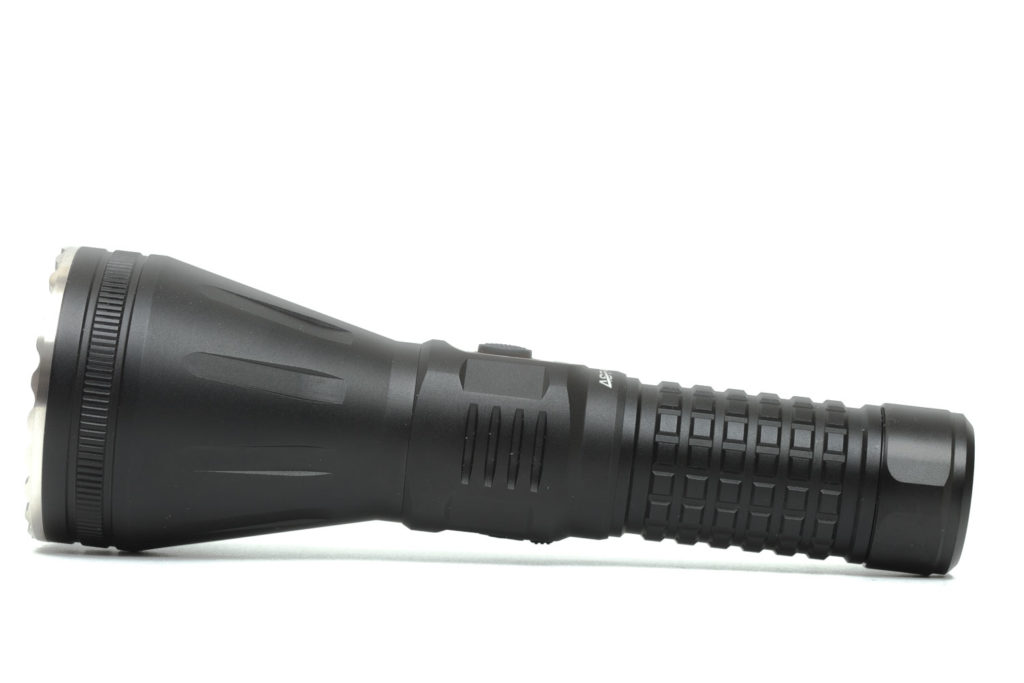
Astrolux WP3 specifications
| Brand/model | Astrolux WP3 |
|---|---|
| LEP | LEP |
| Lumens | 562 lm |
| Beam intensity | 2,180,000 cd |
| Battery config. | 1*26650 / 21700 |
| Material | Aluminum |
| Modes | 3 |
| Blinkies | Strobe |
| Reflector | N/A |
| Waterproof | IPX6 |
| Review date | September 2021 |
Introduction:
We have reviewed a few dozen different LEP flashlights, and this review is about another LEP, called : Astrolux WP3.
You probably know this isn’t the first Astrolux LEP flashlight. The Astrolux WP3 has 2 older brothers, the WP1 and WP2. Although sharing the same model name, the WP3 differs greatly from those 2. It’s not just about the design, it’s also about the UI, and last but not least: its performance. While I can’t say much about its performance yet (scroll to the performance section if you can’t wait), it performs differently from the WP1 and WP2.
Package quality.
I was a little surprised to receive the Astrolux package as a parcel. It wasn’t shipped inside an extra protective box or a bag, but the original box was used as the parcel. I don’t care too much, and think they wanted to save some cost on a review light. And I don’t mind it too much. Inside the package, you should find the following:
- The Astrolux WP3 flashlight
- Astrolux 21700 battery (4500mAh)
- 21700 battery adapter
- Lanyard
- O-rings
- Manual (Mine didn’t include one)


Flashlight in use
One of the first things you’ll notice is the large flashlight body diameter and a rather rough knurling. I love the way it feels and fits in my hands because of this.
There’s only 1 switch, and that’s an electronic side switch. So you don’t need to change your hand position if you carry it underhand. Overhand use makes switching modes a little more difficult unless you use your pinky or ring finger. You can clearly hear and feel the switch when you press it, unlike some of the newest switches, like the ones on the Lumintop FW series, that have no travel and almost feel like you’re not really pushing a ‘switch’.
However, there’s 1 little note. I would have preferred the location of the switch a little more forward towards the front. Right now, it’s just a little unnatural to hold on to the flashlight and place the thumb on the switch. But that doesn’t have to be a problem in your daily use.
Astrolux includes a lanyard, so if you don’t like carrying it in your pocket, there’s your second option. I just tested it by pulling pretty strongly, and it didn’t snap. Take that for what it’s worth. And in case you wondered, it does include an adjustable cord lock. So there you have the second option of carrying it.
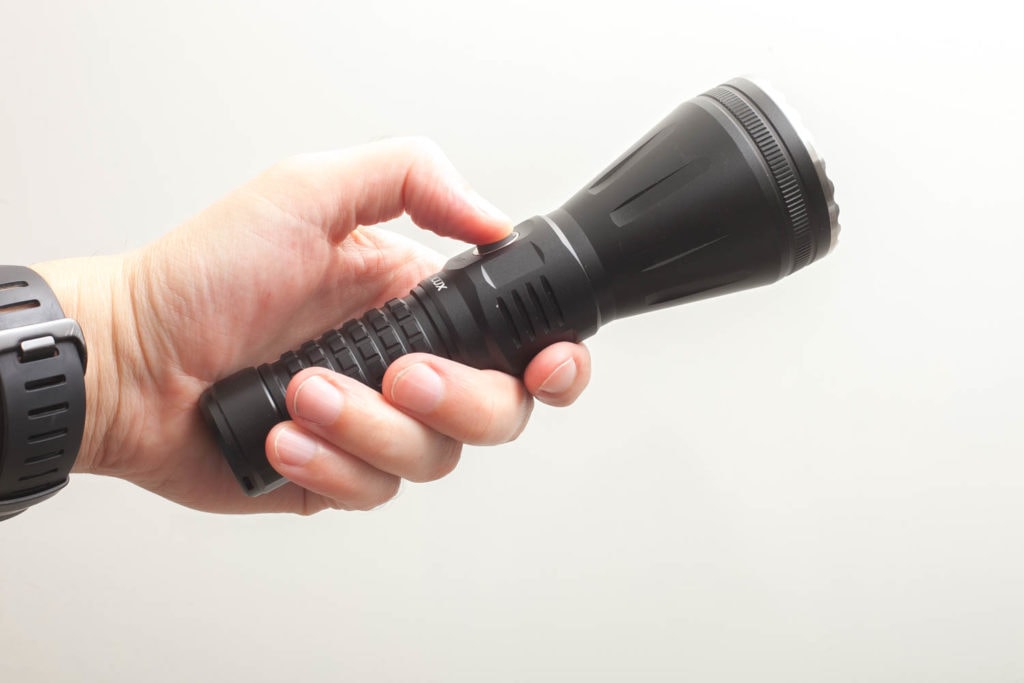


Build Quality, and Warranty
I loved how the WP1 and WP2 were designed, and the anodization in particular. They have a greyish/brownish color that looks a bit more premium than a regular shiny black finish.
Unfortunately, the WP3 doesn’t have that kind of anodization (which looks a lot like Jetbeam’s anodization), but that’s not to say it looks bad. The anodization looks and feels just fine, and at first, it resembles the Astrolux EA02 that we reviewed earlier.
The body can be unscrewed on both ends and has bare threads towards the head and anodized threads towards the tailcap. Speaking about the tail cap, Astrolux used a double spring in the tailcap to reduce resistance for higher amps. I’m not 100% sure how much of a difference it makes, but it’s nice to see.
The tailcap screws down very easily because the threads are lubricated as well as the o-ring. It seems to me there is a second slot to add an o-ring, so you can even be more sure there’s no water entering through the tail cap.
Regarding waterproofness, Astrolux didn’t use the widely used IPX8 rating (of which many flashlights will fail during testing, I believe) but the more conservative IPX6 rating. That’s probably due to using a USB-C port instead of the o-rings in the tailcap.
Warranty? Since Astrolux is a Banggood brand, I’d recommend contacting them. Here’s Banggood’s page about warranty and returns: https://www.banggood.com/help_center/question_category.html?catid=211








LEP, Lens, Bezel, and Reflector
Currently, there are 2 types of LEP modules: the one with the mirror and the one that uses the shine-through system. Until now, the mirror-type LEP modules had the highest lumen output and the highest intensity. So, I was positively surprised to see the mirror-type module in the WP3 instead of the shine-through modules in the WP1 and WP2.
BTW, That doesn’t mean that the shine-through types aren’t performing well. (You better check out the Maxtoch LA60 review, for that matter). It just means that you have more chance of a high-performing LEP at this point. I assume that the shine-through modules get more popular for smaller flashlights because of their dimensions. They can be used in much smaller lights, including 18350-style EDC flashlights. If you think I’m kidding, check out the Lumintop Thor 1, or the Lumintop Thor Mini.
Besides its good-looking design, there’s also 1 thing that makes the WP3 look even more attractive: namely, a stainless steel bezel.
Stainless steel not only looks better but is also more robust and can handle strong impacts better. If you didn’t know this, try dropping a flashlight with an aluminum bezel and another one with a stainless steel bezel from a 2-meter height. (Make sure the bezel hits the floor first). The bezel with the least damage is going to be the one with the stainless steel bezel.
The beam itself is not white but more yellowish. If you care a lot about High CRI, BBL, and tints, I would recommend getting your preferred LED instead. The hotspot is very intense, and there’s a glowing yellow circle around the hotspot that will have a donut hole at a close distance. This is normal, so don’t worry about it. Also, when you see the hotspot at a close distance, you notice the blueish hue around this donut ring, which is also quite normal for this type of LEP flashlight.


Dimensions and size comparison
| Dimension | Mm | Inch |
|---|---|---|
| Length | 184 mm | 7.24 in |
| Head diameter | 59.5 | 2.34 in |
| Tailcap diameter | 34 mm | 1.34 in |
Weight:
- Empty: 301.1 g / 10.62 oz
- With 21700 battery: 386.7 g / 13.64 oz.
Flashlight comparison
Size compared to other LEP flashlights
Image 1: Back row left to right: Astrolux WP3, Jetbeam M1X WP-RX, Astrolux WP2, Jetbeam RRT M1X Raptor, Weltool W4, Acebeam W30, Maxtoch LA60, Maxtoch L2K, Maxtoch L3K
Image 1: Front row: Lumintop Thor 1, Lumintop Thor 2, Acebeam W10 gen2, Nextorch T7L, Olight Odin Turbo, Jetbeam M2S WP-RX, Fenix TK30, Weltool W3 PRO, Jetbeam RRT M2S Raptor, Nextorch Tool T10L, Nonbranded 26650 LEP.
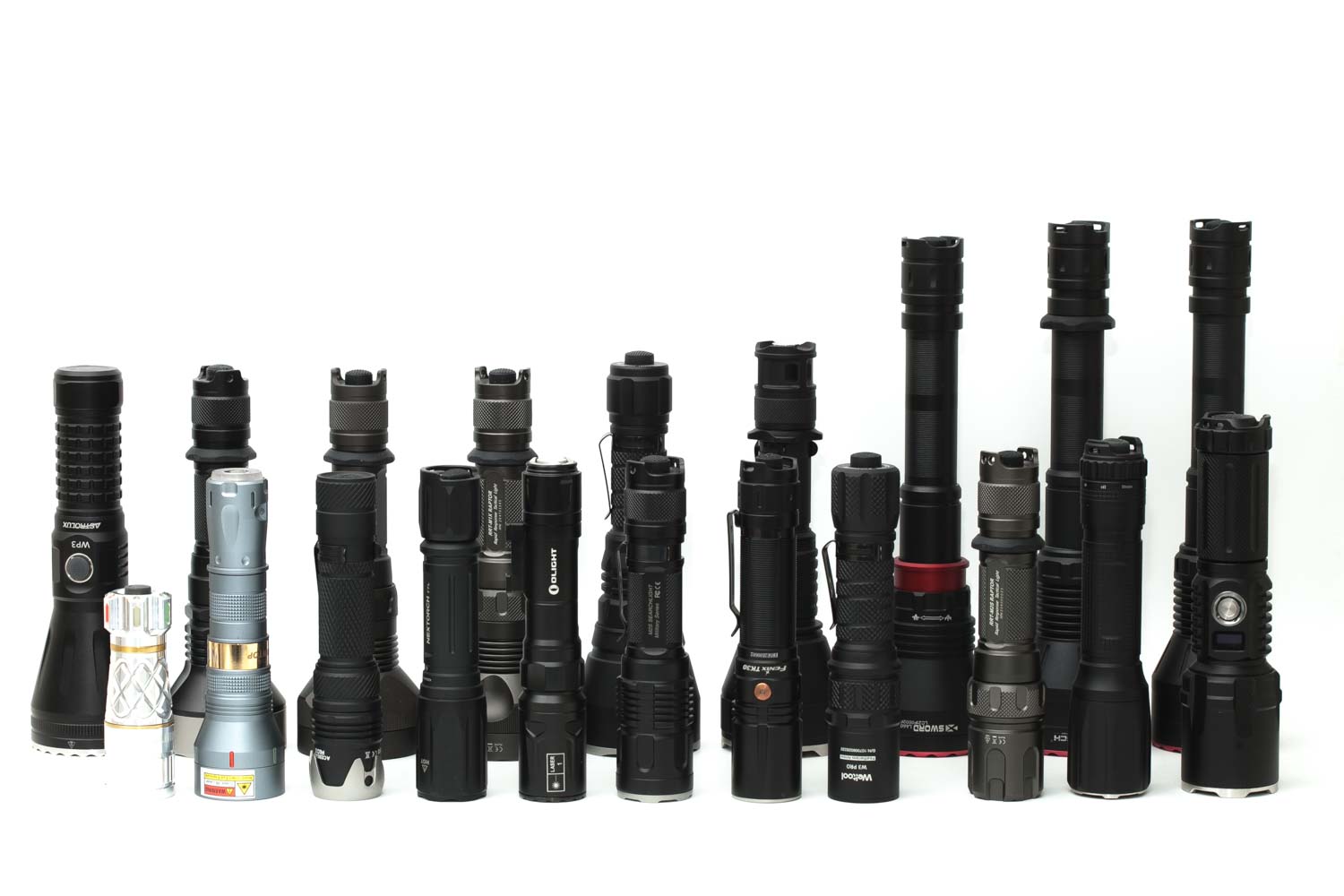
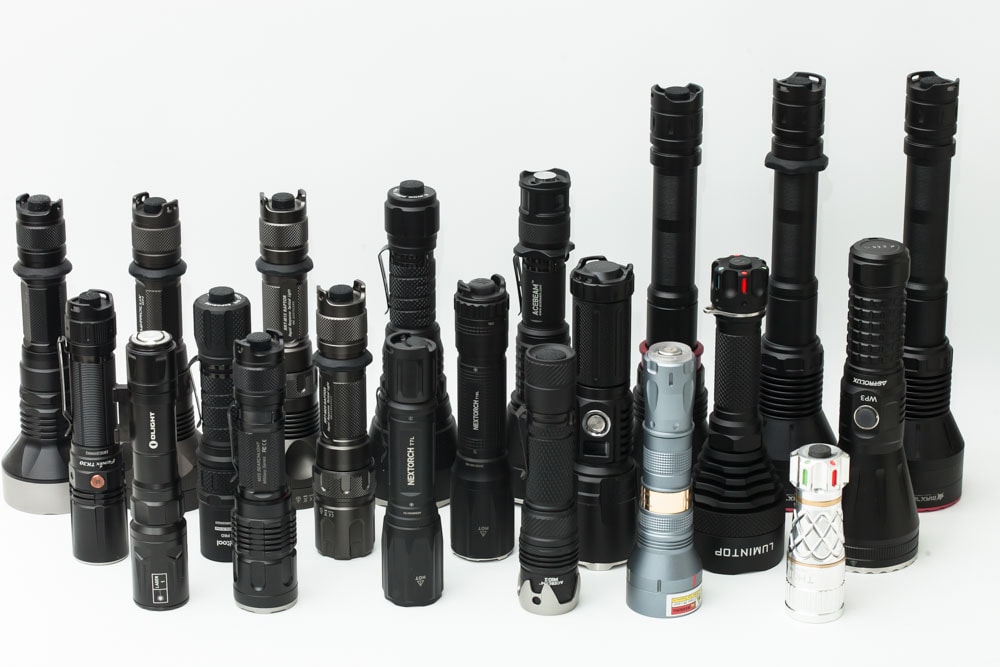
Driver & User Interface:
Available modes:
- Low, High, and Turbo
From OFF:
- Single-click: High
- Double click: Turbo
- Triple-click: Strobe
From ON:
- Single-click: switch between low and high
- Double click: Turbo
- Triple-click: Strobe
- Press and hold: turn off
Shortcuts:
- To Turbo: double click from on, or off
- To Strobe: triple click from on, or off
Mode memory:
- None. The WP3 will always start in High, unless you use the shortcut to Turbo or Strobe.
Blinky modes menu:
- Yes, only a single strobe
Low battery warning:
- None
Lock-out mode:
- Only mechanical
PWM:
- Yes, it is clearly visible in Low and High modes, but not visible in Turbo mode. This makes it easy to distinguish between High, and Turbo mode. You just wave the flashlight around and if you see dots or lines, you’re using High mode. If you see a solid line, you’re in Turbo mode.
Batteries & Charging
Okay, this is where I got a little confused. The Astrolux WP3 is shipped with an Astrolux E2145 21700 Battery and a battery adapter, but the body is actually made for a 26mm battery, like the 26650 and probably the 26800. I think got the original battery tube, so mine is meant to handle 21700 and 26650 batteries. I saw that Banggood also sells a 26800 battery tube, for the 26800 battery. These batteries have a higher capacity than the 26650’s but are also harder to get.
The WP3 uses a USB-C port to charge the battery. It charges over 1A, so it can take up to 4 hours to charge the battery. I always charge my batteries in a dedicated lithium-ion charger, so I never use the built-in charger if I don’t need to use it.




Astrolux WP3 test: performance
Let me get this out first. When comparing beams or testing LEP flashlights, always point the beam onto an object and run through the modes several times. I am saying this because it is often tricky to know in what mode an LEP flashlight is because of the very intense hotspot. The difference between a Turbo and High mode can be hard to distinguish.
If you don’t do this, you might actually use the wrong mode and do beamshots. Therefore, testing an LEP flashlight with a lux meter is crucial so you know how many modes there are and what the beam intensity should look like. You’ll know if you accidentally missed a mode.
If you use a lux meter and note down the numbers, you’ll easily see if a flashlight is performing well or not. Don’t go by eyeballing the intensity, nor by using a digital camera, without going through all the modes, and know for sure you’re in the right mode.
Lumen measurements:
All output numbers are relative to my homemade Integrating Sphere. It is set up with an Extech SDL400 Lux Meter for measurements, including a Kenko PRO1D ND-16 filter. The base measurement is done with a Convoy S2+ that has been tested at 255 lumens.
All of my readings were taken from a fully-charged Astrolux 21700 4500mAh.
Amps were measured with a Fluke 77III, at the tailcap.
| Mode | Amps | Specs | @ 30sec | @ start |
|---|---|---|---|---|
| low | 1.34A | 95 lm | 125 lm | 125 lm |
| high | 3.27A | 412 lm | 323 lm | 332 lm |
| turbo | 3.8A | 562 lm | 445 lm | 463 lm |
Parasitic drain:
- Moving from 0.7mA and 0.9mA, tested by touching 1 prong to the body, and the other touching the battery
Runtime:
The runtime test was done with the 50cm integrating sphere and Extech SDL400 data logging Lux Meter.
These are the numbers in terms of lumens. I know it is not very exciting, and the runtime is relatively short!
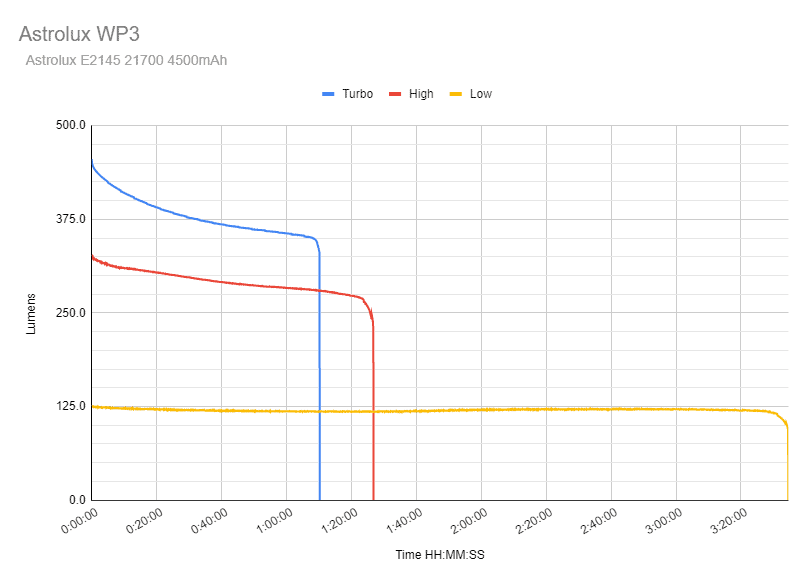
For more useful info, scroll down for the 2 comparison graphs. 1 compared to the Astrolux WP2, and the other compared to all my other big head LEPs.
Throw Measurement
Measurements were taken outdoors at 20 meters (after 30 seconds) with a professional Hagner E4-X Lux Meter.
| Mode | specifications | measured | Meters | Yards | Miles |
|---|---|---|---|---|---|
| Low | – | 636,000 cd | 1595 | 1744 | 0.99 |
| High | – | 1,692,000 cd | 2602 | 2845 | 1.62 |
| Turbo | 2,180,000 cd | 2,412,000 cd | 3106 meters | 3397 yards | 1.93 miles |
Here are 2 comparison runtime graphs. Keep in mind that all tests were done with their own battery.
I highlighted the WP3 in the largest comparison graph with the clearest and thickest blue line. The other one is a comparison between the WP2 and WP3 in terms of candelas. And yes, those are large differences, both in intensity and runtime.

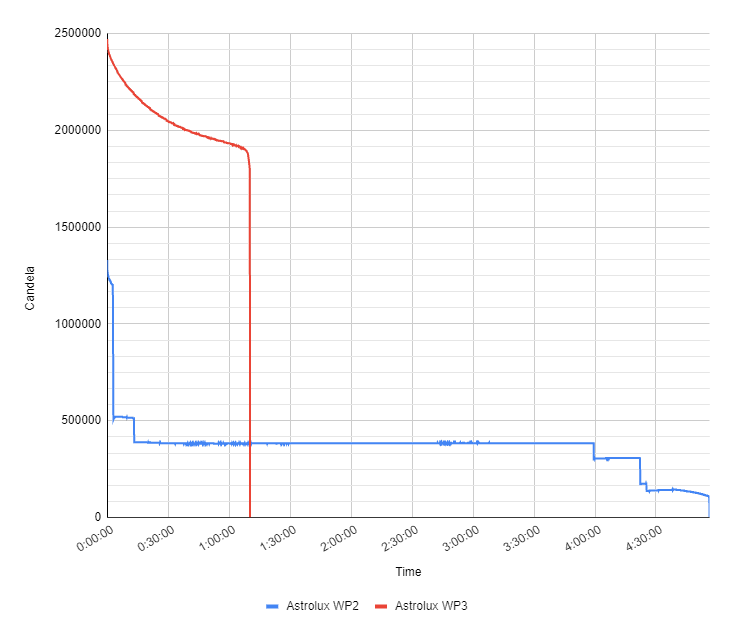
Candela comparison: best single-cell large head LEP flashlights
A list of the best single-cell LEP flashlights with large heads we reviewed: These numbers are NOT from the specifications but are measured by our reviewers. They include all single-cell LEP flashlights with large heard (+-60mm and above). The numbers include the measurement in lumens (lm), measure candela (cd), and calculated distance in meters, and yards. These numbers are all measured 30 seconds after turning on.
| Flashlight (click for review) | @30sec (lm) | Candela (cd) | Meters | Yards |
|---|---|---|---|---|
| Acebeam W30 | 498 | 1,312,000 | 2291 | 2505 |
| Acebeam W35 | 733 | 1,892,000 | 2751 | 3009 |
| Amutorch BT60 | 316 | 1,644,000 | 2564 | 2804 |
| Astrolux WP2 | 303 | 1,248,000 | 2234 | 2443 |
| Astrolux WP3 | 445 | 2,412,000 | 3106 | 3397 |
| FireFlyLite LEP01 | 391 | 816,000 | 1807 | 1976 |
| Jetbeam M1X WP-RX | 491 | 2,280,000 | 3020 | 3302 |
| Lumintop Thor 3 | 311 | 1,728,000 | 2629 | 2875 |
| Maxtoch L2KS | 442 | 2,308,000 | 3038 | 3323 |
| Nextorch T20L | 975 | 1,284,000 | 2266 | 2478 |
| NlightD L1 | 513 | 1,940,000 | 2786 | 3046 |
| Weltool W4 | 450 | 2,184,000 | 2956 | 3232 |
| Weltool W4 PRO | 550 | 2,808,000 | 3351 | 3665 |
And below is an interactive throw comparison graph (candela), between the best single-cell LEP flashlights with large heads. Hover your mouse over the interactive graph below to see the details of each specific light.
(tip: hold your mobile phone horizontally to see the full graph). Or visit the full interactive graph here.
The next graph shows the same graph, but then focusing on the first 60 minutes of their runtimes. Or view the full 60min interactive graph here.
It’s currently one of the best-performing LEP flashlights, just below the Maxtoch L2K (with 2 batteries).
Beamshots
For the following beamshots, I used a Canon EOS 5D Mk2 and a 100mm lens. Manual settings: ISO1600, .5sec , F4, 5000K
The tower is about 450 meters / 492 yards away.
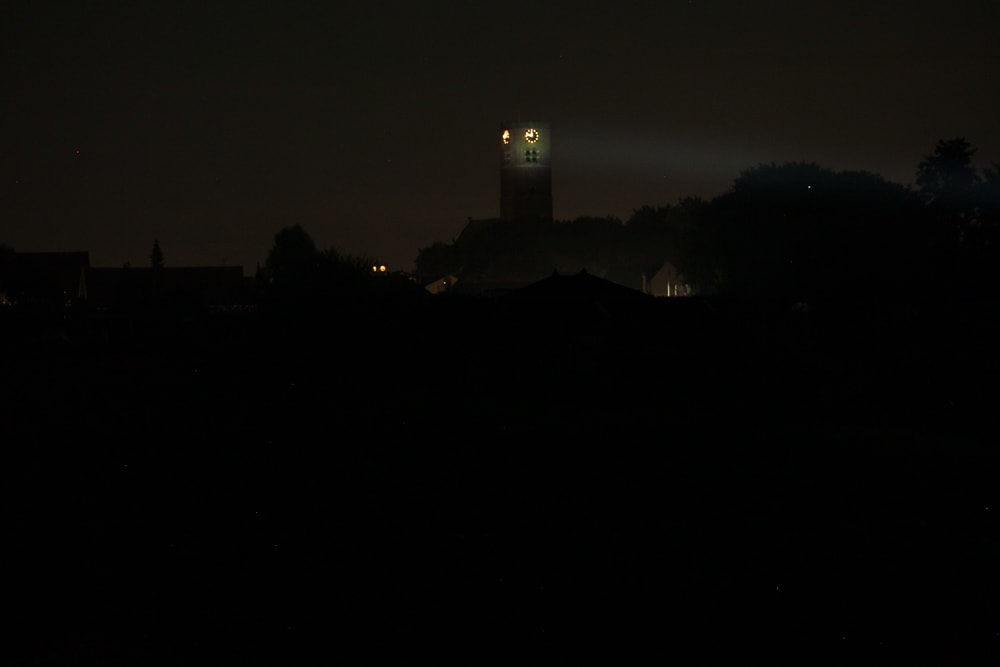
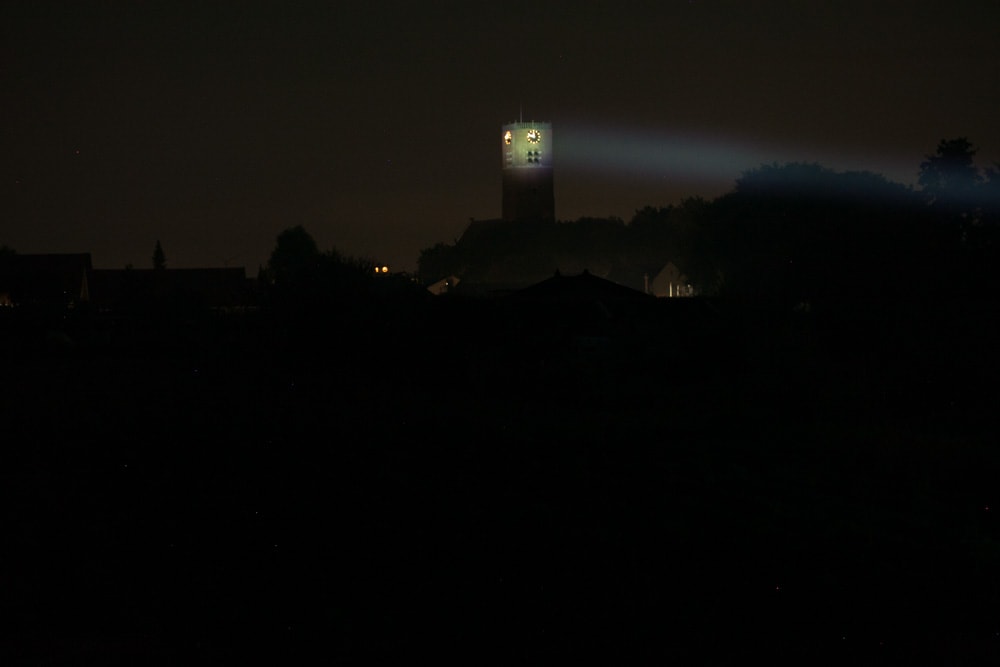
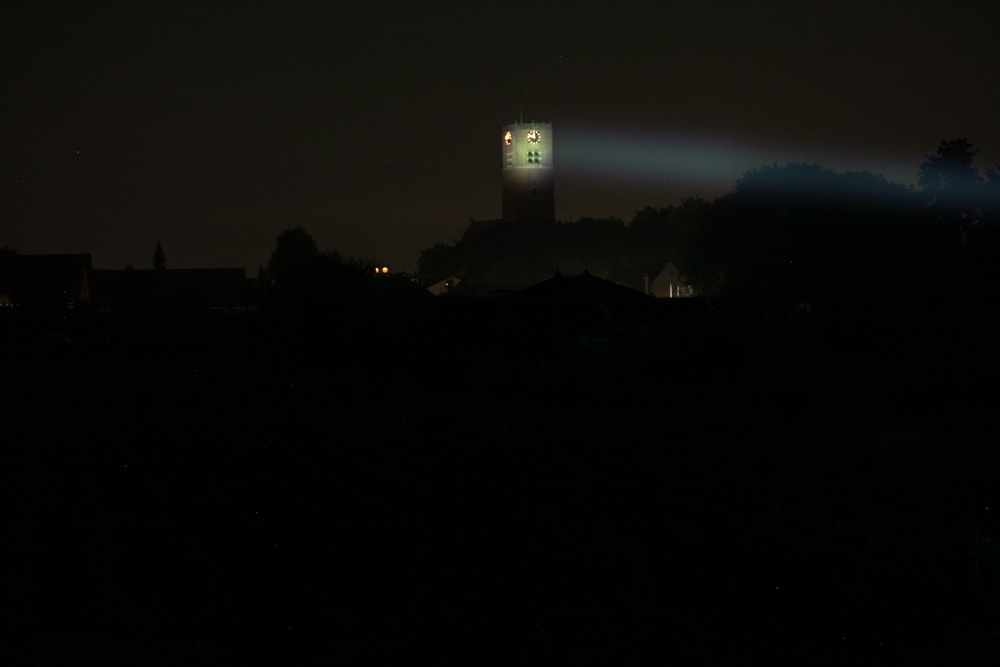
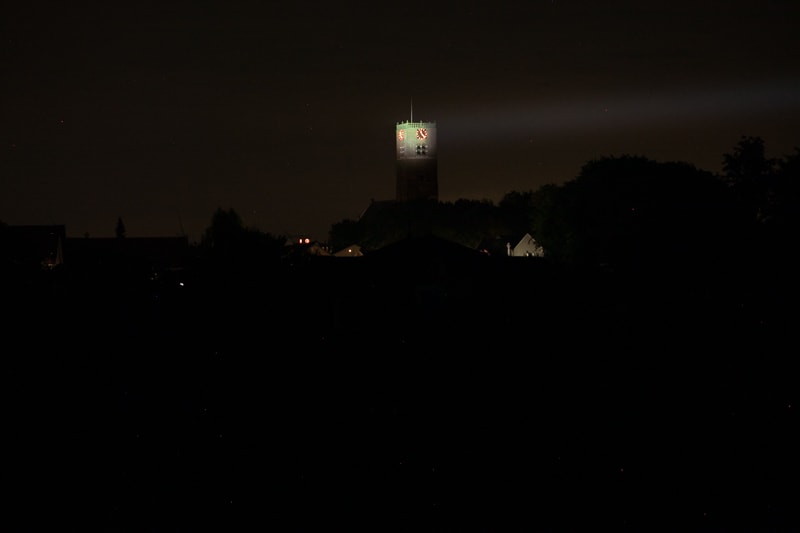
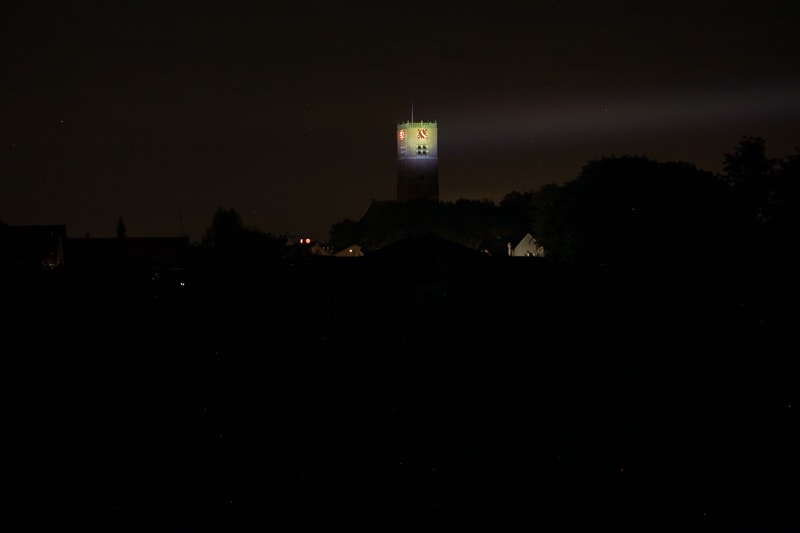
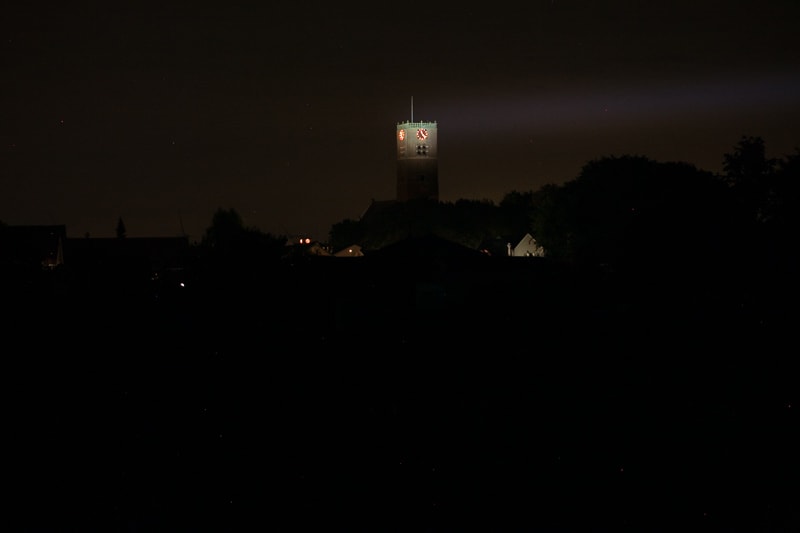
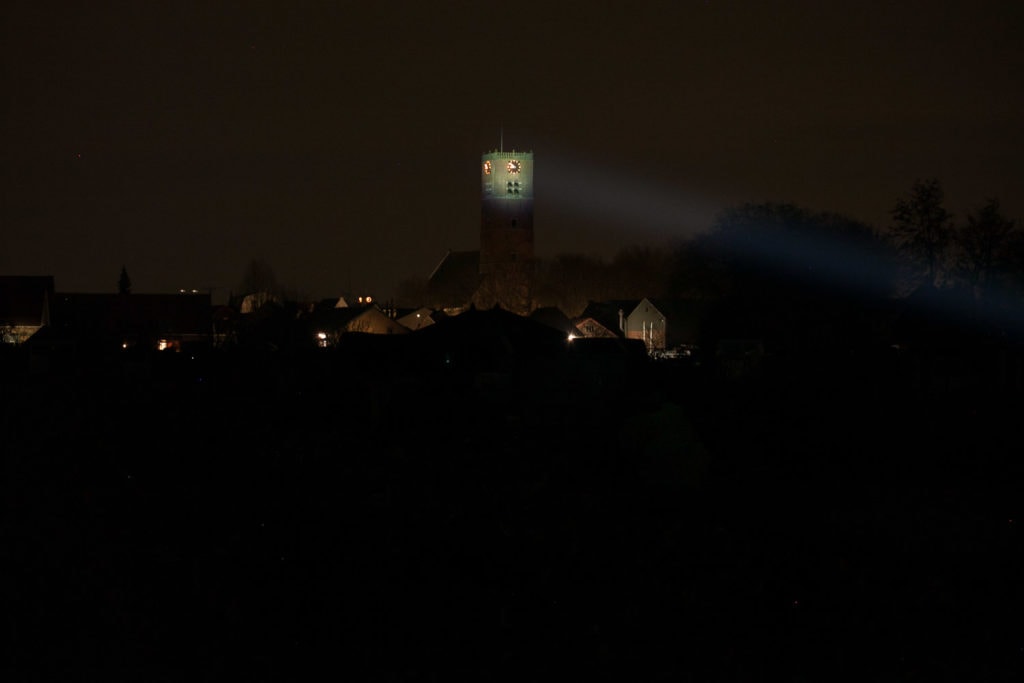

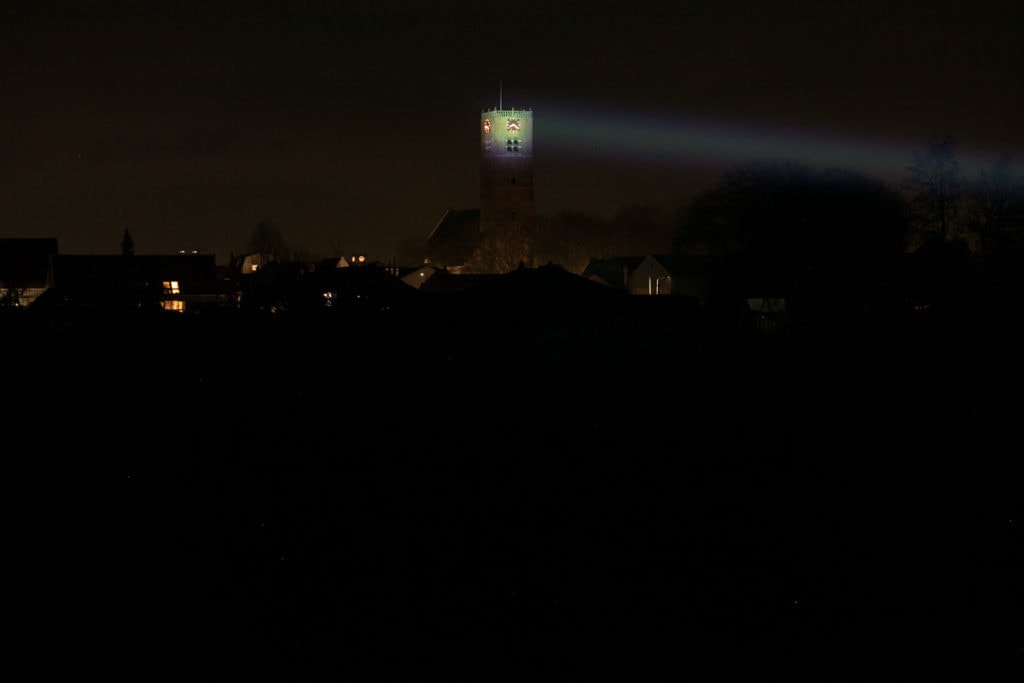
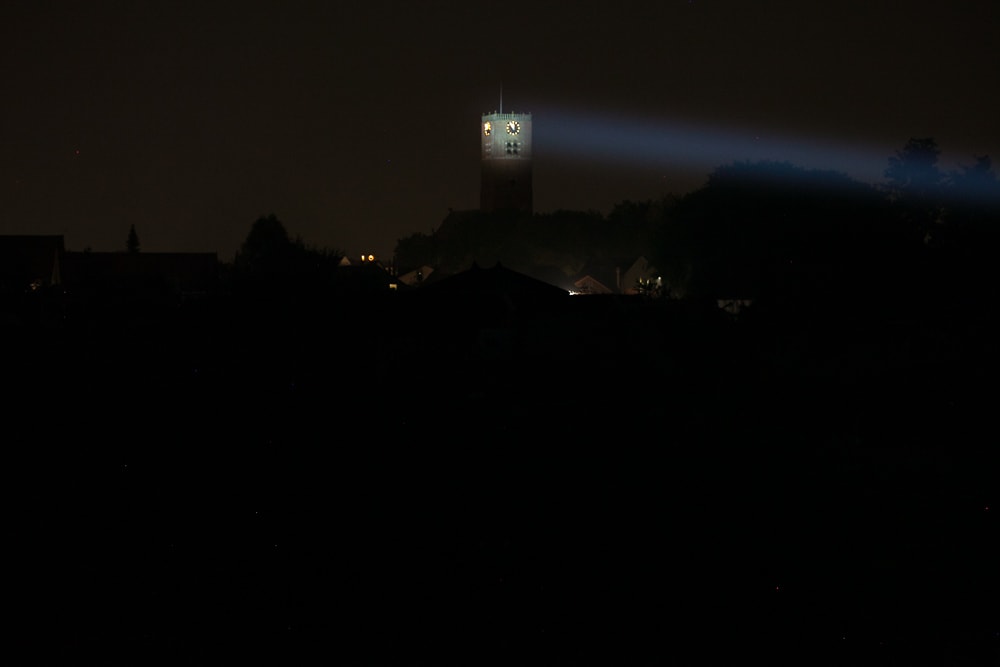
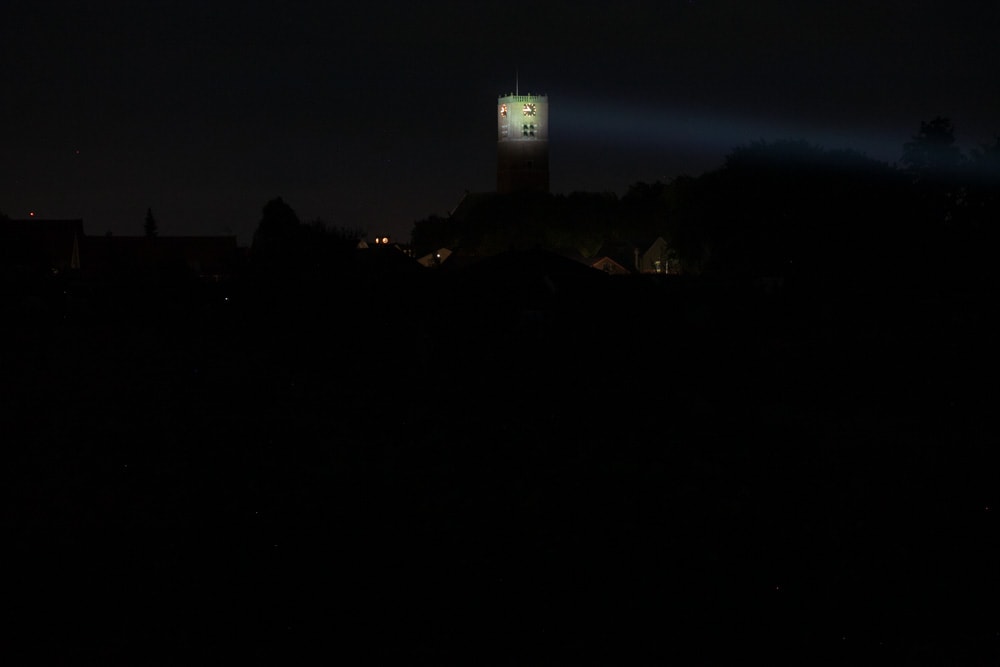
Disclaimer: This flashlight was sent to me for review at no cost by Banggood. I have not been paid to review, nor have I been holding back on problems or defects.
Final Verdict
Pros
- Throws extremely far
- Nice design with nice body diameter
- Includes a 21700 battery, but you can also use a 26650 battery, or even a 26800 with a special battery tube.
- Built-in charging with USB-C port
Cons
- Visible PWM in Low and High mode (edit: I seem to be unlucky with my sample, all other people have no problems with this)
- Short runtime in all modes
- Like with all LEPs, higher output modes can be hard to distinguish
Explanation on star ratings:
1: Avoid: my phone flashlight would be a better choice – 2: Poor: significant defect or issues, much better options available at the same price – 3: Average: some defects or issues – 4: Good: recommended (minor issues) – 5: Great: highly recommended

4 stars: ★★★★
I currently own a few dozen LEP flashlights, and this is one of the best performers!
The only 2 drawbacks are the visible PWM (only my copy, other people didn’t have this, so this could be just my own sample) and short runtimes, compared to the other flashlights.
From the 3 Astrolux LEPs, the WP3 is the clear winner in terms of intensity! It throws much, much farther than both the WP1 and WP2.
Yes, recommended!
Buy Astrolux WP3 here
1lumen selects and reviews products personally. We may earn affiliate commissions through our links, which help support our testing.